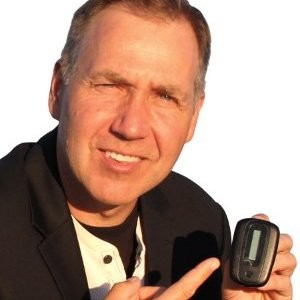Glance at the most recent Numeris PPM-based radio market ratings for top Canadian markets such as Montréal and Toronto, and you’ll see every local radio station listed. The same goes for diary-based ratings surveys.
While some radio station operators may grumble about their placement in the ratings, and about the accuracy of PPM-based measurement, chances are their station appears in the results.
In the U.S., Nielsen Audio‘s ratings reports in both PPM and diary-based markets offer the same intelligence. But, that’s about to change — sort of. And, the move has already generated angst and furor from an industry that’s had difficulty attracting media buyers and advertisers for years.
As first reported by Streamline Publishing’s Radio Ink, Nielsen Audio starting in 2021 will no longer include non-subscribing radio stations in the ratings reports most commonly used by advertising agencies and media buyers.
For Nielsen Audio, its “Subscriber First” initiative comes as financially wounded Nielsen prepares to split into two companies; its ratings services, including Nielsen Audio, have been the bright spot financially, however, generating much of the profits for the nation’s dominant audience measurement firm.
Importantly, non-subscriber data won’t be entirely out of the hands of those in charge of media buys or advertising budgets.
In an interview with Radio Ink, Nielsen Audio Managing Director Brad Kelly notes that all non-subscribing stations that have enough listening to rank in a market report will remain listed in respondent level data. However, Radio Ink points out, this represents an upgrade in price from the summary data.
Kelly also tells Radio Ink that, at Nielsen Audio, those paying for the measurement of their industry should benefit from it, versus people who do not support such activity. “This is effectively addressing the free rider syndrome that has gone on for too long,” he says. “We believe it’s an issue of fairness. We’ve taken a number of steps in recent years to create a sharper distinction between subscribers and non-subscribers and how they’re depicted in the data and the benefits they receive from the data.”
This includes the erasure of non-subscribing stations from Topline Data published by such industry websites as AllAccess Music Group and Radio-Online.com. As such, SummitMedia‘s stations as of September 2020 will no longer appear in the Nielsen Audio ratings for markets such as Honolulu and Birmingham. For Saga Communications, a decision to no longer subscribe to Nielsen Audio has resulted in an incomplete look at the ratings in every market where it owns stations, including No. 36-ranked Columbus, Ohio, home of four stations absent in the topline results.
Is this fair for Saga, or for ad buyers who will not see the results for Columbus stations including WSNY and WLVQ?
In Kelly’s eyes, the “Subscriber First” initiative is more than an issue of fairness. Rather, it’s an issue of economic sustainability. “I’m not going to whitewash that,” he tells Radio Ink. “This week we debuted the headphone adjustment factor. That’s something we’ve been working on and building to. It’s obviously a huge benefit to the industry, but it’s one of many. We have the multi-channel PPM encoding. We’ve got passive monitoring going on. We are monitoring the quality of the codes, and a new software encoder that we are working on. These are pieces of hardware that we’re shipping to radio stations across the country with real significant costs. Stack that on top of the tremendous amount of money we are pouring into PPM markets to keep our KPIs high.”
Kelly also shares with Radio Ink that the “Subscriber First” policy “will encourage non-subscribers to step up and support the measurement of their industry.”
What if he is wrong? “Then we will have some tough decisions to make down the road, but at least for 2021 we are committing to no additional market closures,” he says.
As RBR+TVBR reported in July, the Spring 2020 audience estimates for Battle Creek, Mich.; Bend, Ore.; Billings, Mont.; Grand Junction, Colo.; New Bedford-Fall River, Mass.; Texarkana, Tex.-Ark.; Richland-Kennewick-Pasco, Wash.; Twin Falls-Sun Valley, Idaho; and Yakima, Wash., were the last for Nielsen Audio.
“Like most commercial businesses, Nielsen Audio continually reviews the economic viability of doing business in all markets,” Nielsen said in a statement offered to RBR+TVBR. “If the audio marketplace in select markets cannot financially support measurement, we discontinue producing our syndicated market report in those markets. That is just business as usual, [and] the typical expansion and contraction of our rated audio market list, which is the case with these nine markets.”
For subscribers, the data may be used for six months after the report’s distribution. As such, the window of usage is swiftly closing for stations in those markets.
MINORITY EXEMPTION
When the “Subscriber First” initiative rolls out in 2021, there will be exemptions.
All minority-owned stations and non-commercial entities will not be impacted. This includes female-owned broadcasting companies, Radio Ink says. According to Radio Ink, they will be pressed into the data with a single mention.
Meanwhile, Kelly believes the overall impact of the change in PPM markets will be minimal, with 97% of the top 20 stations in metered markets subscribing to Nielsen Audio.
“If you run a top 20 ranker and then do it again 48 times for the 48 PPM markets you have a list of 960 radio stations,” he told Radio Ink. “After we apply this policy 21 stations will fall out. So 939 will continue to show either by virtue of the fact they already subscribe or they are part of the exempt group. That quantifies the size of the impact of this policy change.”
The changes will happen in three waves in 2021. PPM markets go first in January. The continuous diary measurement markets (51-100) go in April. The smallest diary markets will shift in the spring.
Reaction from some radio station operators was negative. Tom Taggart, VP of Seven Ranges Radio in St. Marys, W. Va., said, “Nielsen has become too pricy for smaller ranked markets. We’re getting agency rates in the $3-$5 range (gross, not net), while the top country in the market can barely crack $15 in drive time. It makes no economic sense to pay $15,000 for two stations–or around $75,000, for a cluster when the agencies won’t buy enough to support those rates.”
Taggart adds that local direct advertisers have only two questions: How Much? and How Many? “They don’t care about ‘the book,’” he says.
Gene Kuntz, GM of WITZ-AM & FM and WQKZ-FM in Jasper, Ind., (pictured, at left) commented, “So once again the county-by-county small market stations lose! Not only are Nielsen’s numbers a year behind, now you are shutting out agencies that could potentially buy our stations in smaller markets. Not everyone can afford to pay for year-old data in a non-PPM market. Again your interpretation of how it affects the PPM markets solidifies that that’s all you care about….that and charging more!”
Meanwhile, one broadcaster who spoke on a condition of anonymity with Radio Ink assailed Nielsen’s plan, likening it to “extortion” and labeling it “mafia-like,” and in violation of anti-trust laws. He added that a class-action lawsuit should be filed against Nielsen Audio, and baby steps are already being taken.
Furthermore, Radio Ink reached out to the Radio Advertising Bureau (RAB) and the NAB. The RAB declined to comment on the initiative; the NAB is not taking a position.
— Additional reporting by Ed Ryan and Rob Dumke.







Including minority-owned stations while shutting out stations owned by non-minorities smacks of reverse discrimination. If there’s one word that could be used to describe this new policy, it is “bullshit.”
Comments are closed.